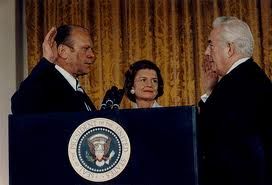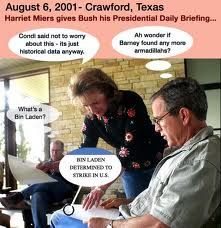Cross posted from The Stars Hollow Gazette
This week after much hinting, President Barack Obama cancelled his private meeting Russian President Vladimir Putin that was to take place before the G-20 meeting in St. Petersburg in early September. The primary reason for the snub (yes, despite what you are hearing in the American msm, in the international community this is a snub) is Russia’s decision to grant temporary asylum to the NSA whistleblower Edward Snowden.
In a statement, the White House said that it had concluded there was “not enough recent progress in our bilateral agenda” to hold a US-Russia summit. It cited a lack of progress on arms control, trade, missile defence and human rights, and added: “Russia’s disappointing decision to grant Edward Snowden temporary asylum was also a factor that we considered in assessing the current state of our bilateral relationship. Our co-operation on these issues remains a priority for the United States.” [..]
The decision to cancel the meeting was greeted with little surprise in Moscow, where analysts and lawmakers have been predicting such a step. Presidential aide Yuri Ushakov said the Kremlin was disappointed that Obama cancelled the meeting with Putin, state news agency RIA-Novosti reported. “It’s obvious that this decision is connected to the situation with the American intelligence services employee Snowden, which was not created by us,” he said.
Nonetheless, the invitation to Obama to visit Moscow remains open, and Russia is prepared to co-operate with the United States on pressing issues, Ushakov said.
Nationalist Duma deputy Vladimir Zhirinovsky, perhaps the most rabid of the many critics of the United States in parliament, said the decision shows “disrespect” towards Russia.
“If you postpone or completely cancel meetings between heads of state under the pretext of the refusal to hand over one person, then relations between countries will quickly reach zero,” Zhirinovsky said.
Pres. Obama has no room to criticize Russia for giving Snowden asylum considering the fact that the US has given shelter to internationally wanted criminals and refused to investigate or prosecute Americans accused of war crimes
In his opinion article, Glenn Greenwald high lighted the most glaring cases:
New York Times, February 28, 2007:
U.S. to refuse Italian request for extradition of CIA agents
BRUSSELS – A senior U.S. official said Wednesday that the United States would refuse any Italian extradition request for CIA agents indicted in the alleged abduction of an Egyptian cleric in Milan, a case investigated by the European Parliament.
“We’ve not got an extradition request from Italy,” John Bellinger, a legal adviser to Secretary of State Condoleezza Rice, told reporters after meeting in Brussels with legal advisers to EU governments.
“If we got an extradition request from Italy, we would not extradite U.S. officials to Italy.”
Washington Post, July 19, 2013:
Panama releases former CIA operative wanted by Italy
A former CIA operative detained in Panama this week at the request of Italian authorities over his conviction in the 2003 kidnapping of a Muslim cleric in Milan was released Friday and had boarded a flight to the United States, U.S. officials said.
Robert Seldon Lady’s release from Panama appeared to avert the possibility that he would be extradited to Italy, where he faces a sentence of up to nine years in prison for his role in the CIA capture of a terrorism suspect who was secretly snatched off a street in Milan and transported to Egypt.
Lady, who left Panama on Friday morning, was “either en route or back in the United States,” Marie Harf, State Department deputy spokeswoman, told reporters at a midday briefing.
It was not immediately clear what steps the United States had taken to secure Lady’s release.
The Guardian, September 9, 2012:
America’s refusal to extradite Bolivia’s ex-president to face genocide charges
Obama justice officials have all but granted asylum to Sánchez de Lozada – a puppet who payrolled key Democratic advisers
[US refuses Bolivia’s request to extradite its former CIA-supported president, Gonzalo Sánchez de Lozada, to stand trial on charges of genocide and other war crimes after de Lozada hires Democratic lobbyists to represent him]
El Paso Times, December 30, 2010:
Luis Posada Carriles won’t be extradited to Venezuela
The US constantly refuses requests to extradite – even where (unlike Russia) they have an extradition treaty with the requesting country and even where (unlike Snowden) the request involves actual, serious crimes, such as genocide, kidnapping, and terrorism. Maybe those facts should be part of whatever media commentary there is on Putin’s refusal to extradite Snowden and Obama’s rather extreme reaction to it. [..]
At his blog Informed Consent, Juan Cole notes that Russia has denied visas to US officials who have been accused of war crimes:
A less remarked-on round in this game of tit for tat (which so far doesn’t rise to the level of being very serious) is the government’s decision last April to deny visas to American officials and former officials who had something to do with torture at Guantanamo, where Russian citizens have been held.
The Moscow Times reports
“The list of banned officials released by the Foreign Ministry in April included former U.S. Vice President Dick Cheney’s chief of staff David Addington, former U.S. Justice Department adviser John Yoo and various other Justice Department officials alleged to have violated Russian citizens’ human rights. United States Admiral Jeffrey Harbeson, the former head of the Guantanamo prison, was denied a Russian visa in January, Komsomolskaya Pravda reported.”
Professor of international law at Princeton University, Richard Falk explained in an article in Al Jazeera, that the granting of asylum to Snowden wasn’t just within Russia’s rights, but was legally compelled.
The most influential media in the United States has lived up to its pro-government bias in the Snowden Affair in three major ways: firstly, by consistently referring to Snowden by the demeaning designation of ‘leaker’ rather than as ‘whistleblower’ or ‘surveillance dissident,’ both more respectful and accurate.
Secondly, they are completely ignoring the degree to which Russia’s grant of temporary refugee status to Snowden for one year was in full accord with the normal level of protection to be given to anyone accused of nonviolent political crimes in a foreign country, and pursued diplomatically and legally by the government that is seeking to indict and prosecute. In effect, for Russia to have turned Snowden over to the United States under these conditions would have been morally and politically scandalous considering the nature of his alleged crimes.
Thirdly, the media’s refusal to point out that espionage, the main accusation against Snowden, is the quintessential ‘political offense’ in international law, and as such is routinely excluded from any list of extraditable offenses. That is, even if there had been an extradition treaty between the United States and Russia, it should have been made clear that there was no legal duty on Russia’s part to turn Snowden over to American authorities for criminal prosecution, and a moral and political duty not to do so, especially in the circumstances surrounding the controversy over Snowden.
And as Mark Weisbot noted
Meanwhile, Snowden and Glenn Greenwald and Wikileaks are winning. At the outset Snowden said his biggest fear was that people would see “the lengths that the government is going to grant themselves powers unilaterally to create greater control over American society and global society and that ‘nothing will change'”. But his disclosures have already created a new debate, and political change will follow. [..]
The spectacle of US attorney general Eric Holder trying to offer Russia assurances that his government would not torture or execute Snowden speaks volumes about how far the US government’s reputation on human rights – even within the United States – has plummeted over the past decade.
Legally, morally and ethically, Pres. Obama has no room to criticize Russia on it human rights violations.
On this day in 1935, President Franklin D. Roosevelt signs into law the Social Security Act. Press photographers snapped pictures as FDR, flanked by ranking members of Congress, signed into law the historic act, which guaranteed an income for the unemployed and retirees. FDR commended Congress for what he considered to be a “patriotic” act.

 After a three-month siege, Spanish forces under Hernan Cortes capture Tenochtitlan, the capital of the Aztec empire. Cortes’ men leveled the city and captured Cuauhtemoc, the Aztec emperor.
After a three-month siege, Spanish forces under Hernan Cortes capture Tenochtitlan, the capital of the Aztec empire. Cortes’ men leveled the city and captured Cuauhtemoc, the Aztec emperor.

 Alcatraz was an uninhabited seabird haven when it was explored by Spanish Lieutenant Juan Manuel de Ayala in 1775. He named it Isla de los Alcatraces, or “Island of the Pelicans.” Fortified by the Spanish, Alcatraz was sold to the United States in 1849. In 1854, it had the distinction of housing the first lighthouse on the coast of California. Beginning in 1859, a U.S. Army detachment was garrisoned there, and from 1868 Alcatraz was used to house military criminals. In addition to recalcitrant U.S. soldiers, prisoners included rebellious Indian scouts, American soldiers fighting in the Philippines who had deserted to the Filipino cause, and Chinese civilians who resisted the U.S. Army during the Boxer Rebellion. In 1907, Alcatraz was designated the Pacific Branch of the United States Military Prison.
Alcatraz was an uninhabited seabird haven when it was explored by Spanish Lieutenant Juan Manuel de Ayala in 1775. He named it Isla de los Alcatraces, or “Island of the Pelicans.” Fortified by the Spanish, Alcatraz was sold to the United States in 1849. In 1854, it had the distinction of housing the first lighthouse on the coast of California. Beginning in 1859, a U.S. Army detachment was garrisoned there, and from 1868 Alcatraz was used to house military criminals. In addition to recalcitrant U.S. soldiers, prisoners included rebellious Indian scouts, American soldiers fighting in the Philippines who had deserted to the Filipino cause, and Chinese civilians who resisted the U.S. Army during the Boxer Rebellion. In 1907, Alcatraz was designated the Pacific Branch of the United States Military Prison. In 1829, James Smithson died in Italy, leaving behind a will with a peculiar footnote. In the event that his only nephew died without any heirs, Smithson decreed that the whole of his estate would go to “the United States of America, to found at Washington, under the name of the Smithsonian Institution, an Establishment for the increase and diffusion of knowledge.” Smithson’s curious bequest to a country that he had never visited aroused significant attention on both sides of the Atlantic.
In 1829, James Smithson died in Italy, leaving behind a will with a peculiar footnote. In the event that his only nephew died without any heirs, Smithson decreed that the whole of his estate would go to “the United States of America, to found at Washington, under the name of the Smithsonian Institution, an Establishment for the increase and diffusion of knowledge.” Smithson’s curious bequest to a country that he had never visited aroused significant attention on both sides of the Atlantic.
 Heyerdahl and his five-person crew set sail from Callao, Peru, on the 40-square-foot Kon-Tiki on April 28, 1947. The Kon-Tiki, named for a mythical white chieftain, was made of indigenous materials and designed to resemble rafts of early South American Indians. While crossing the Pacific, the sailors encountered storms, sharks and whales, before finally washing ashore at Raroia. Heyerdahl, born in Larvik, Norway, on October 6, 1914, believed that Polynesia’s earliest inhabitants had come from South America, a theory that conflicted with popular scholarly opinion that the original settlers arrived from Asia. Even after his successful voyage, anthropologists and historians continued to discredit Heyerdahl’s belief. However, his journey captivated the public and he wrote a book about the experience that became an international bestseller and was translated into 65 languages. Heyerdahl also produced a documentary about the trip that won an Academy Award in 1951.
Heyerdahl and his five-person crew set sail from Callao, Peru, on the 40-square-foot Kon-Tiki on April 28, 1947. The Kon-Tiki, named for a mythical white chieftain, was made of indigenous materials and designed to resemble rafts of early South American Indians. While crossing the Pacific, the sailors encountered storms, sharks and whales, before finally washing ashore at Raroia. Heyerdahl, born in Larvik, Norway, on October 6, 1914, believed that Polynesia’s earliest inhabitants had come from South America, a theory that conflicted with popular scholarly opinion that the original settlers arrived from Asia. Even after his successful voyage, anthropologists and historians continued to discredit Heyerdahl’s belief. However, his journey captivated the public and he wrote a book about the experience that became an international bestseller and was translated into 65 languages. Heyerdahl also produced a documentary about the trip that won an Academy Award in 1951.